Abstract
1. Reflexes were elicited in the first dorsal interosseous muscle of seven normal subjects by electrical stimulation of the digital nerves of the index finger at 3 times perceptual threshold while subjects maintained a constant voluntary contraction of the muscle. The average response in the surface-rectified electromyogram (EMG) consisted of an early inhibitory (I1) component followed by a later excitation (E2). 2. Low intensity anodal electrical or magnetic scalp stimuli were given over the motor cortex in order to elicit muscle responses within the period of the I1 and E2 reflex components. 3. Compared with control responses elicited in the absence of digital nerve stimulation, responses to electrical cortex stimulation were suppressed in the I1 period and facilitated during the E2 period of the reflex. In contrast, responses evoked by magnetic stimulation were suppressed during I1 and also for the first 10 ms or so of the E2 response. Magnetically evoked responses were facilitated during the later part of the E2 reflex. 4. Similar effects were seen when the probability of firing of single motor units was studied. 5. In three subjects, small taps were given to the abducted index finger in order to stretch the first dorsal interosseous muscle and evoke reflexes which were of comparable size to the E2 reflex evoked by digital nerve stimulation. In contrast to the experiments in which digital nerve stimuli were given, responses evoked by magnetic stimulation over motor cortex were facilitated at all times during the course of the reflex evoked when the muscle was stretched. 6. We conclude that single electrical stimuli applied to the digital nerves can reduce for a short period the excitability of motor cortex to magnetic stimulation. This occurs at a time when the same stimulus is evoking an excitatory (E2) reflex in the average surface-rectified EMG.
Full text
PDF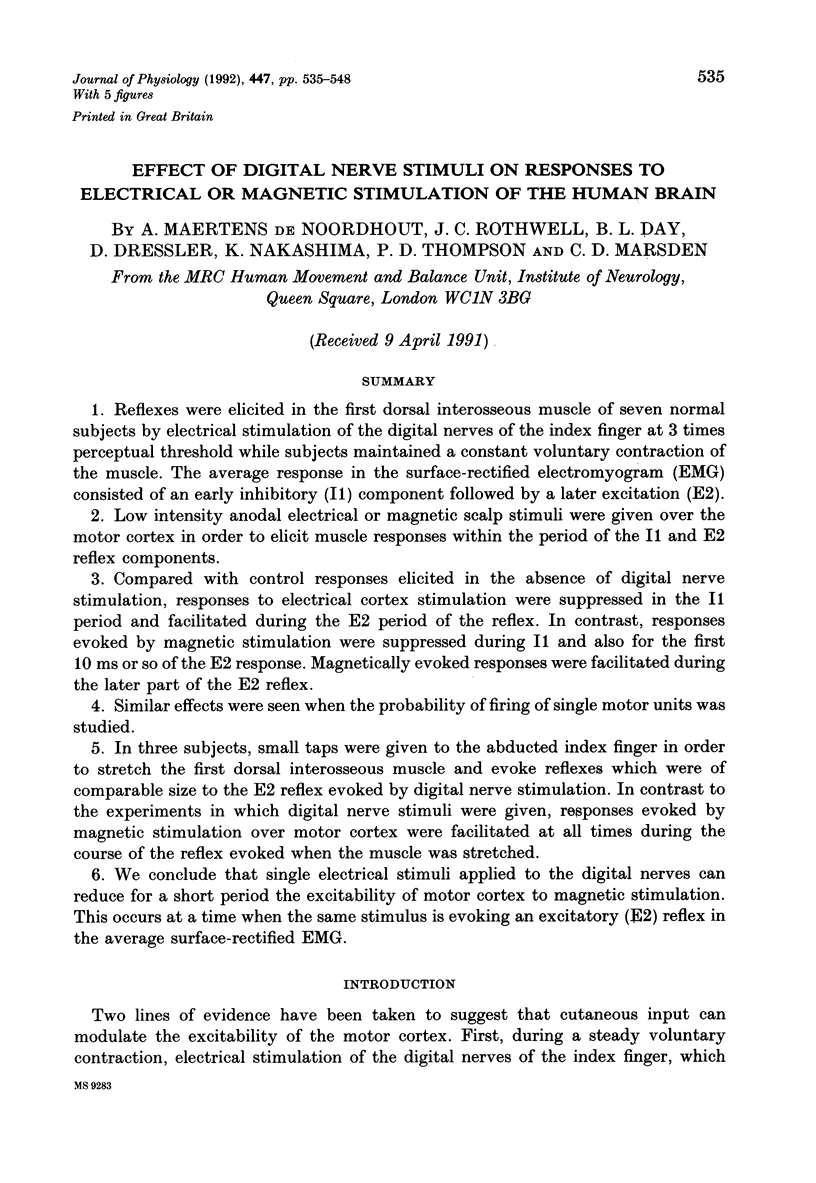
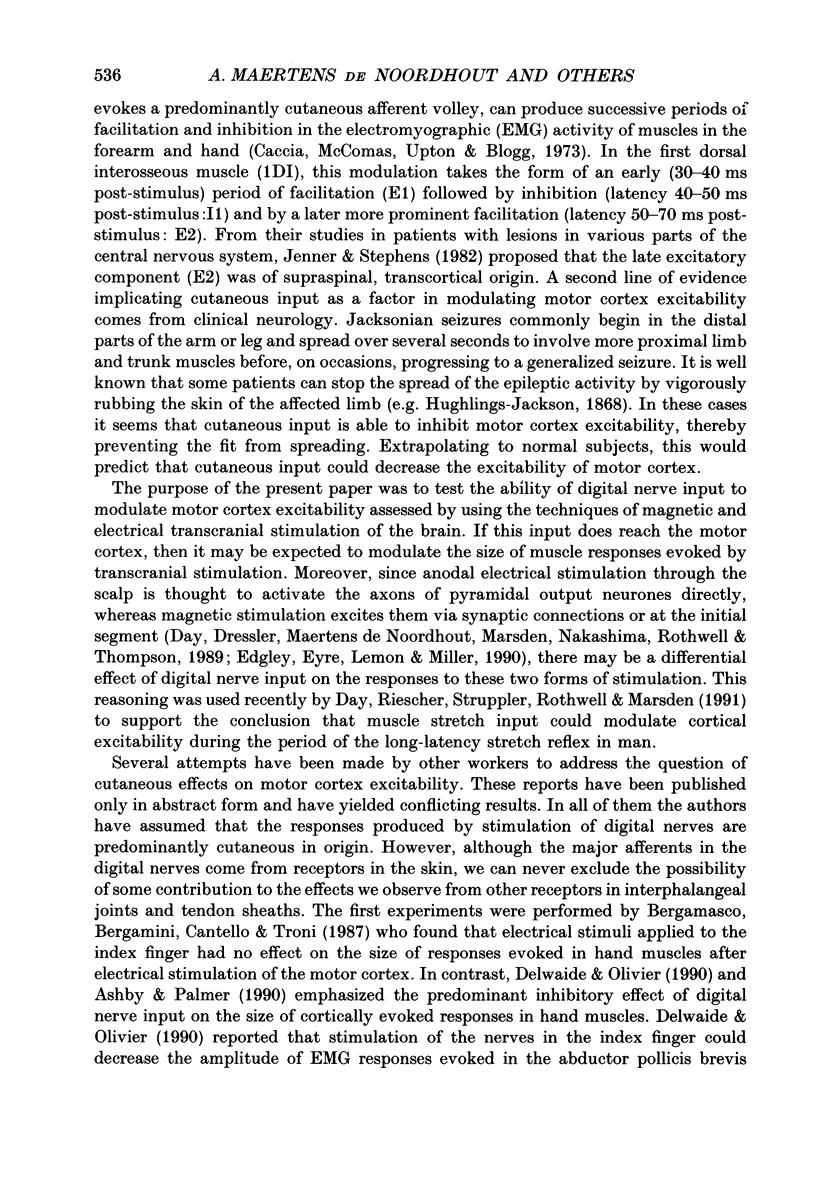
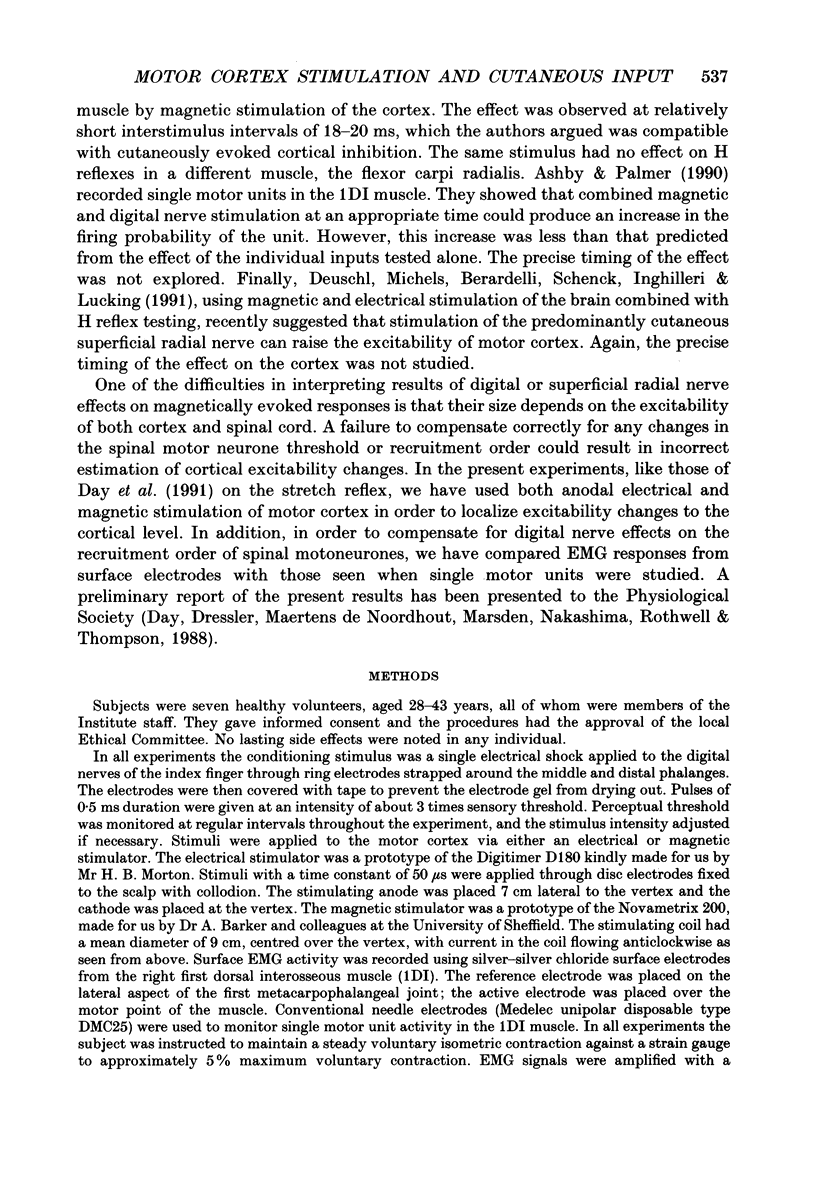
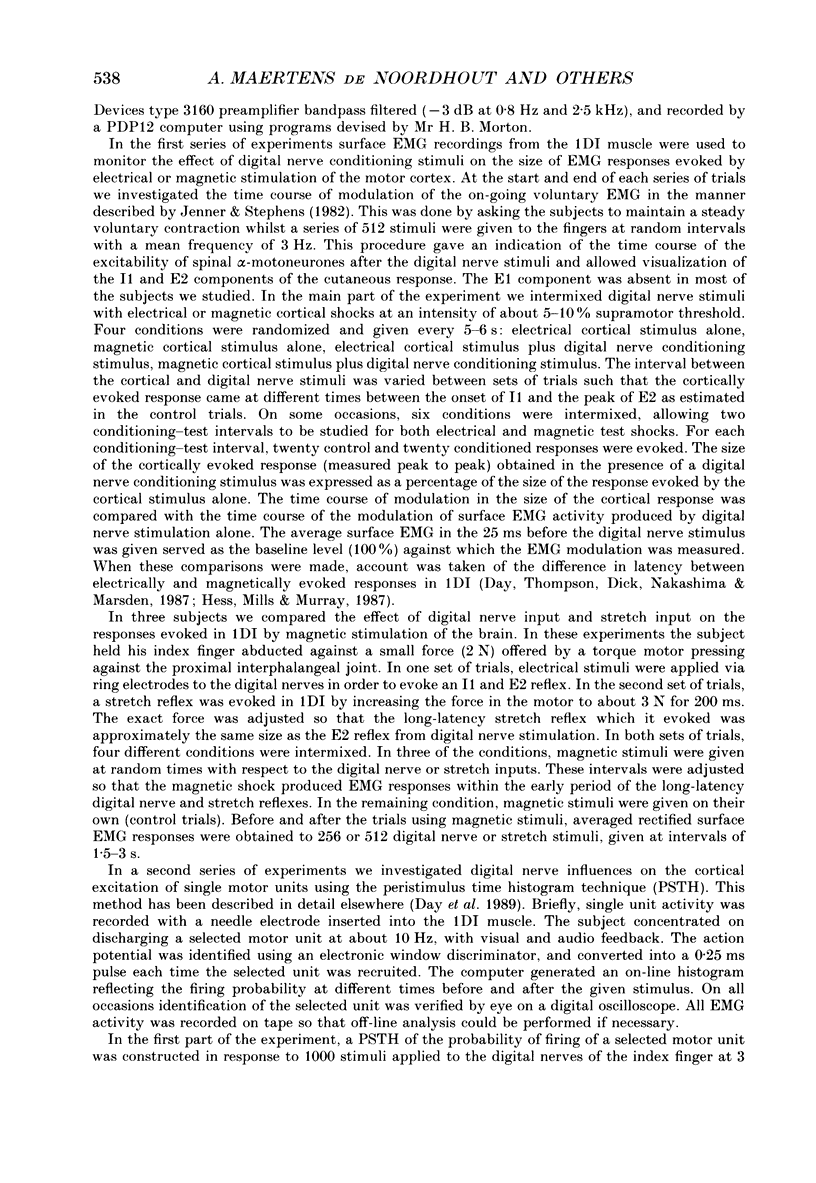
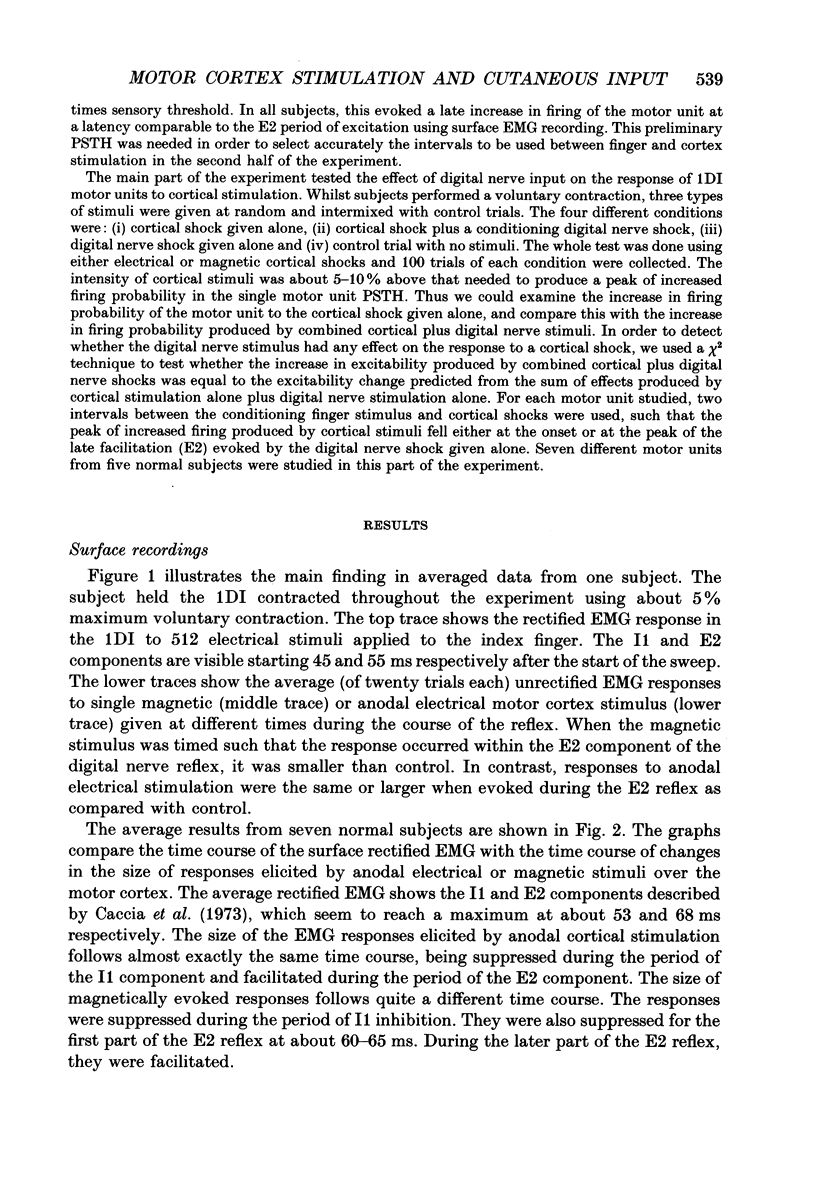
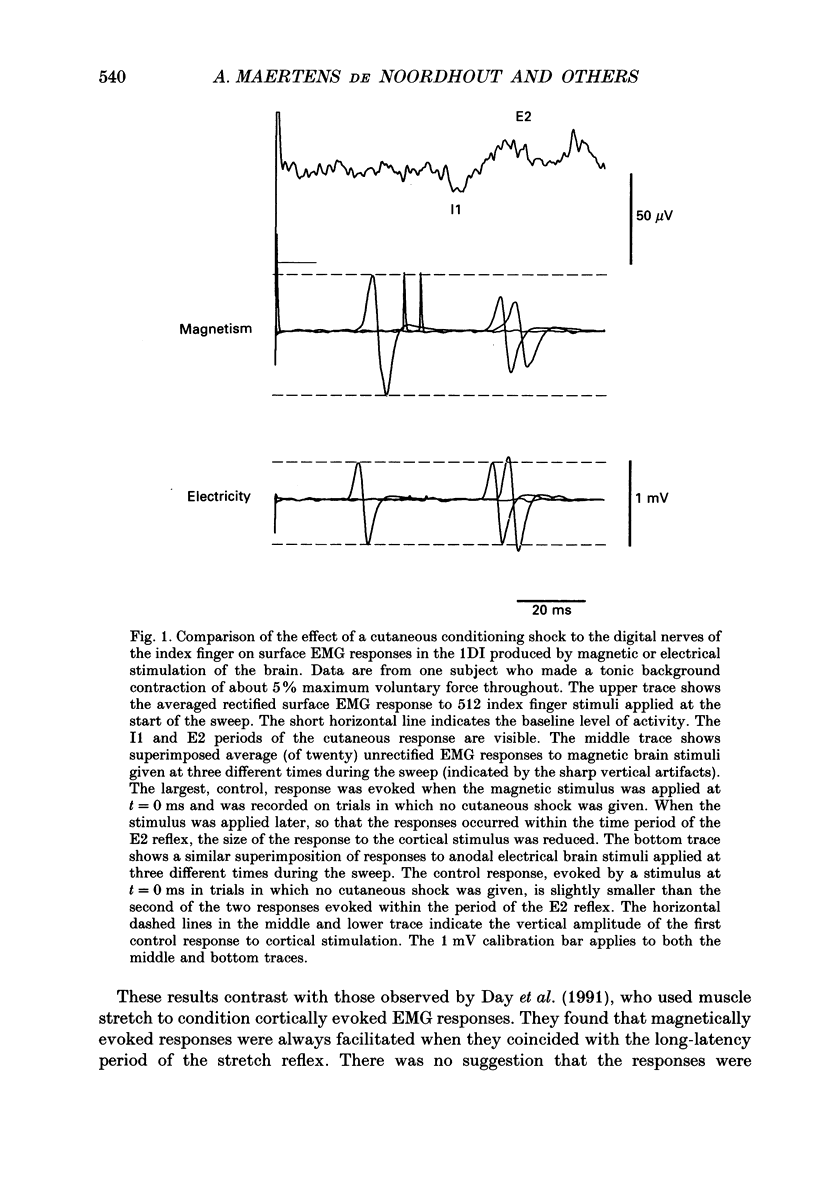
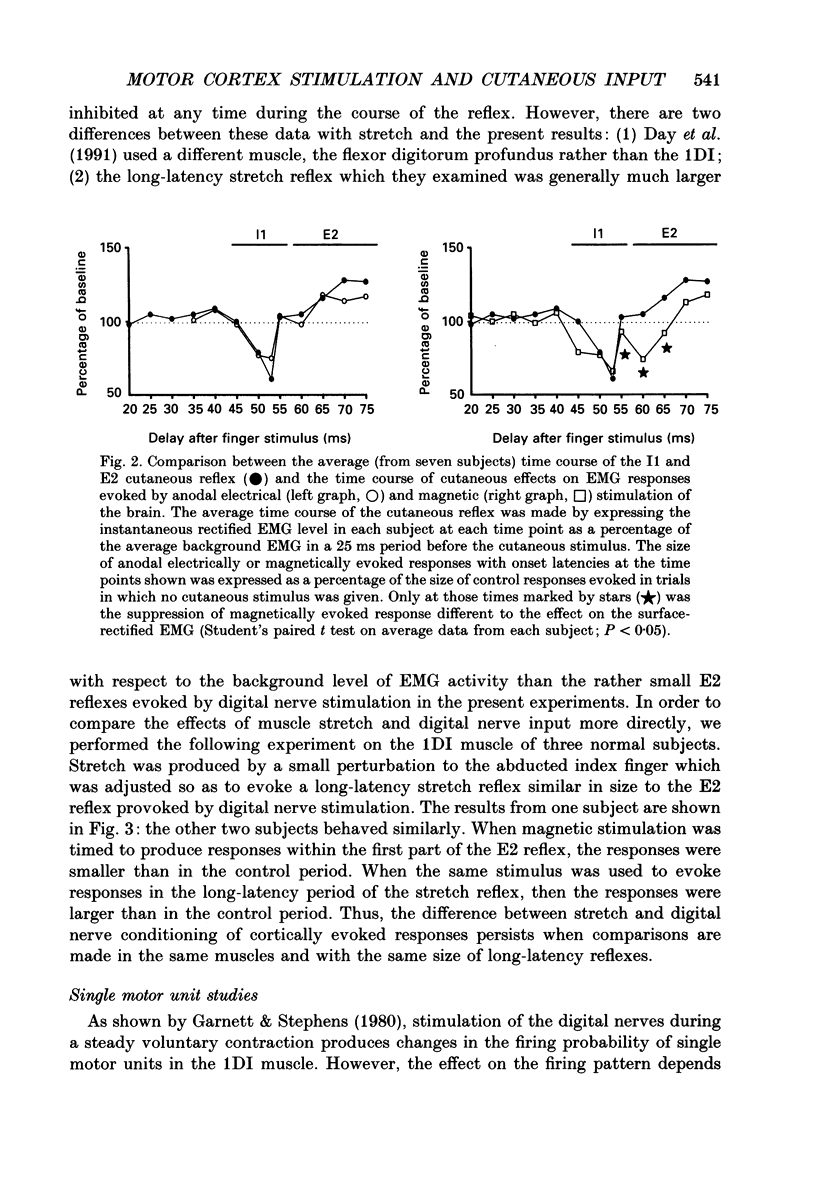
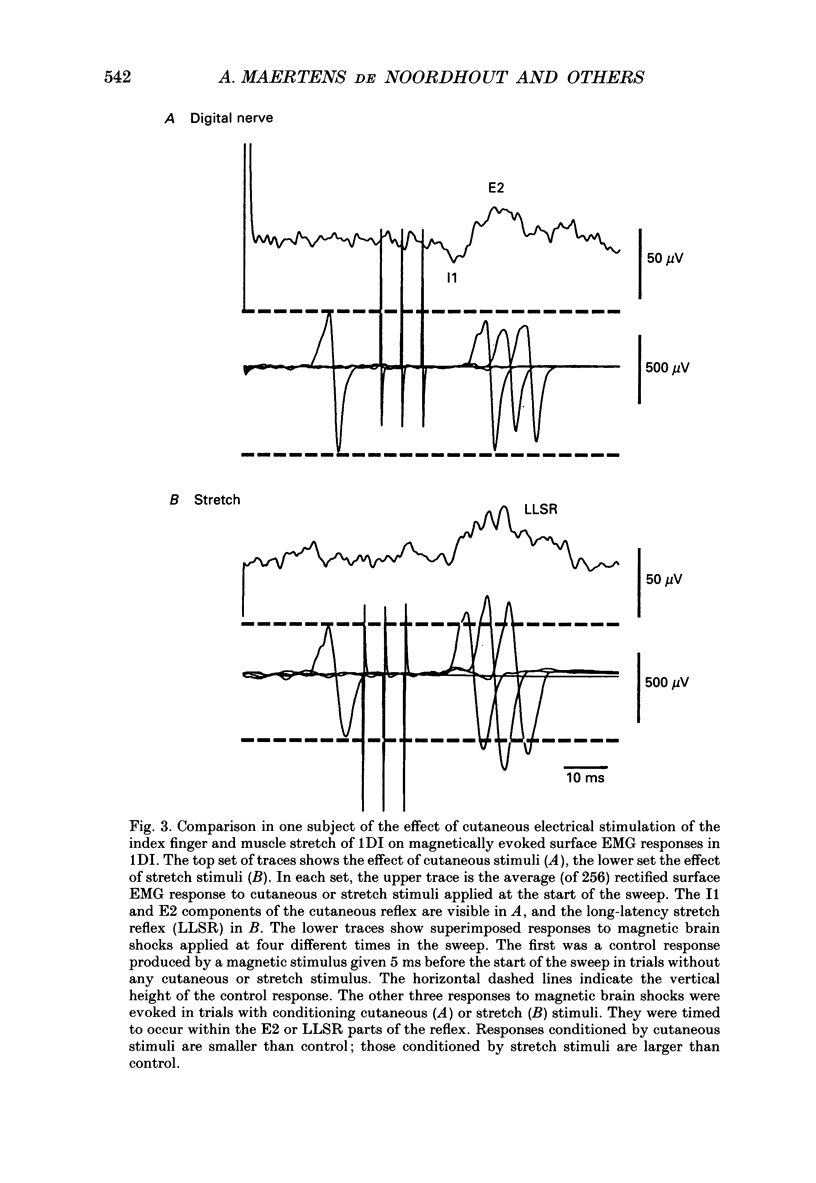
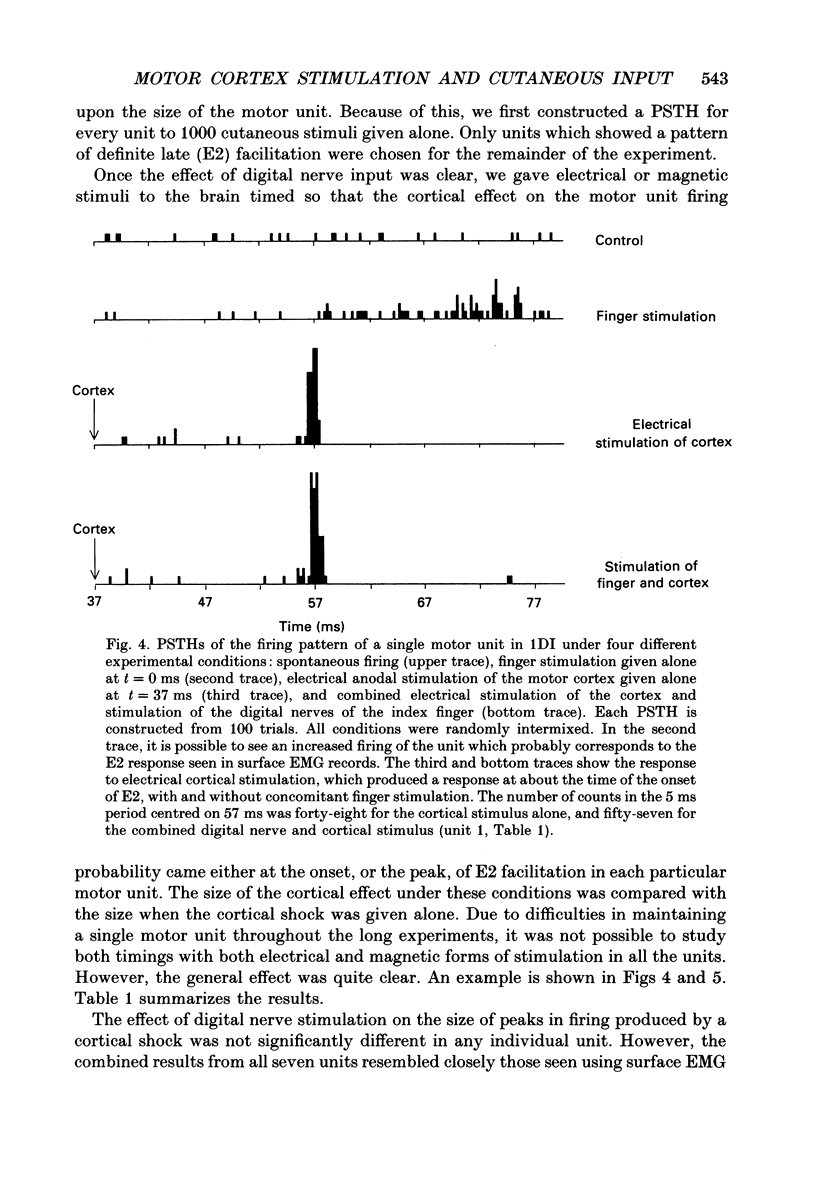
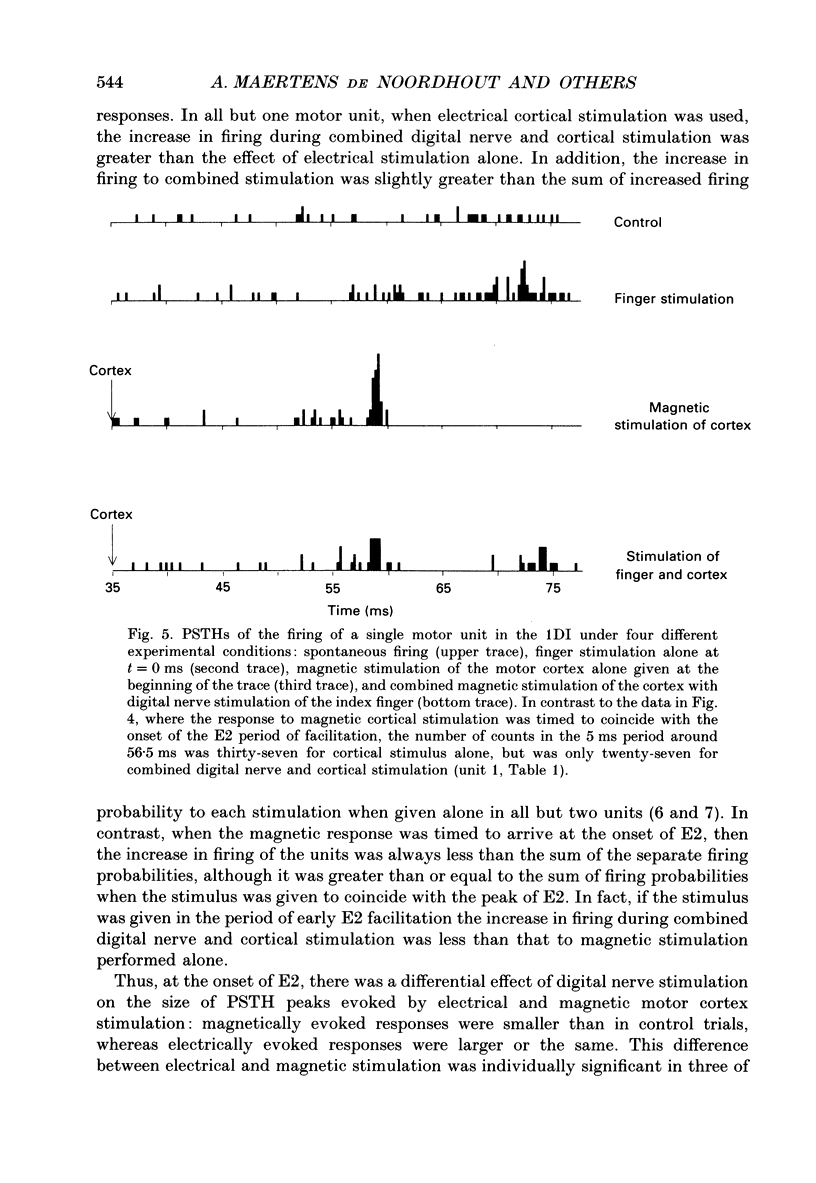
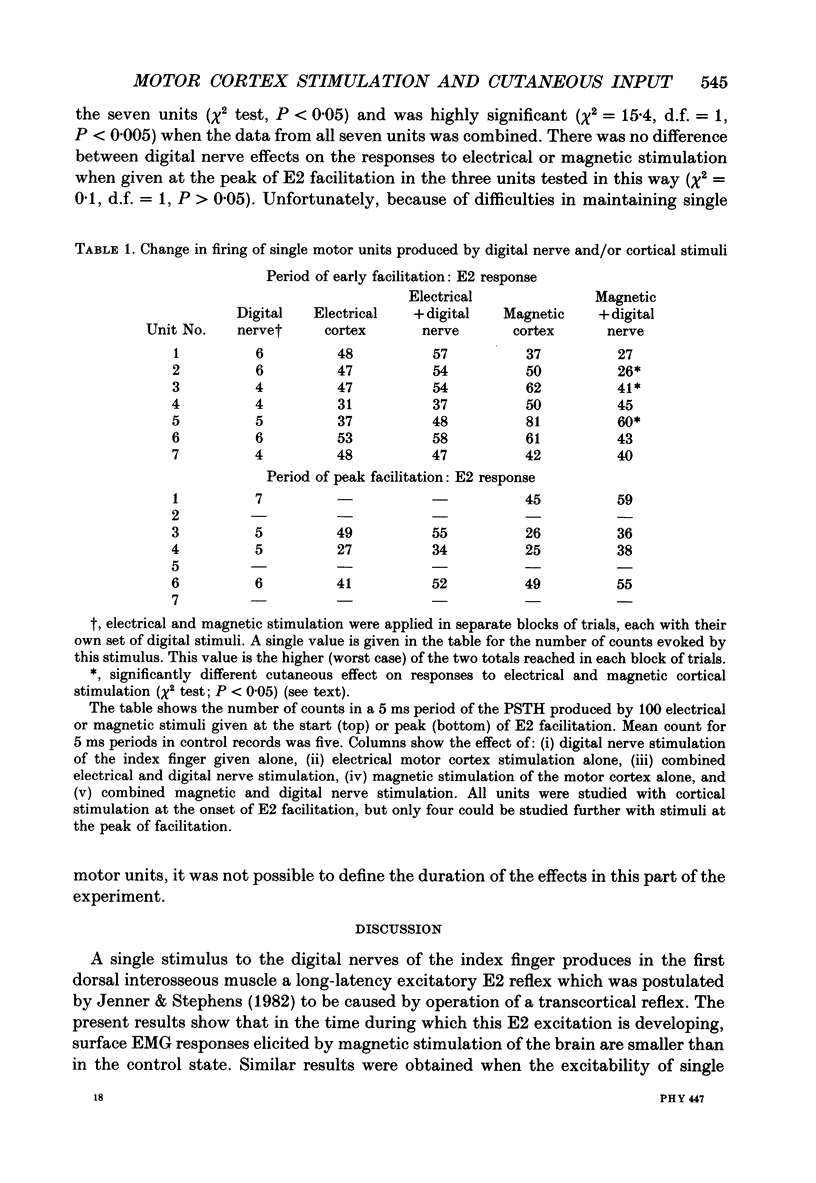
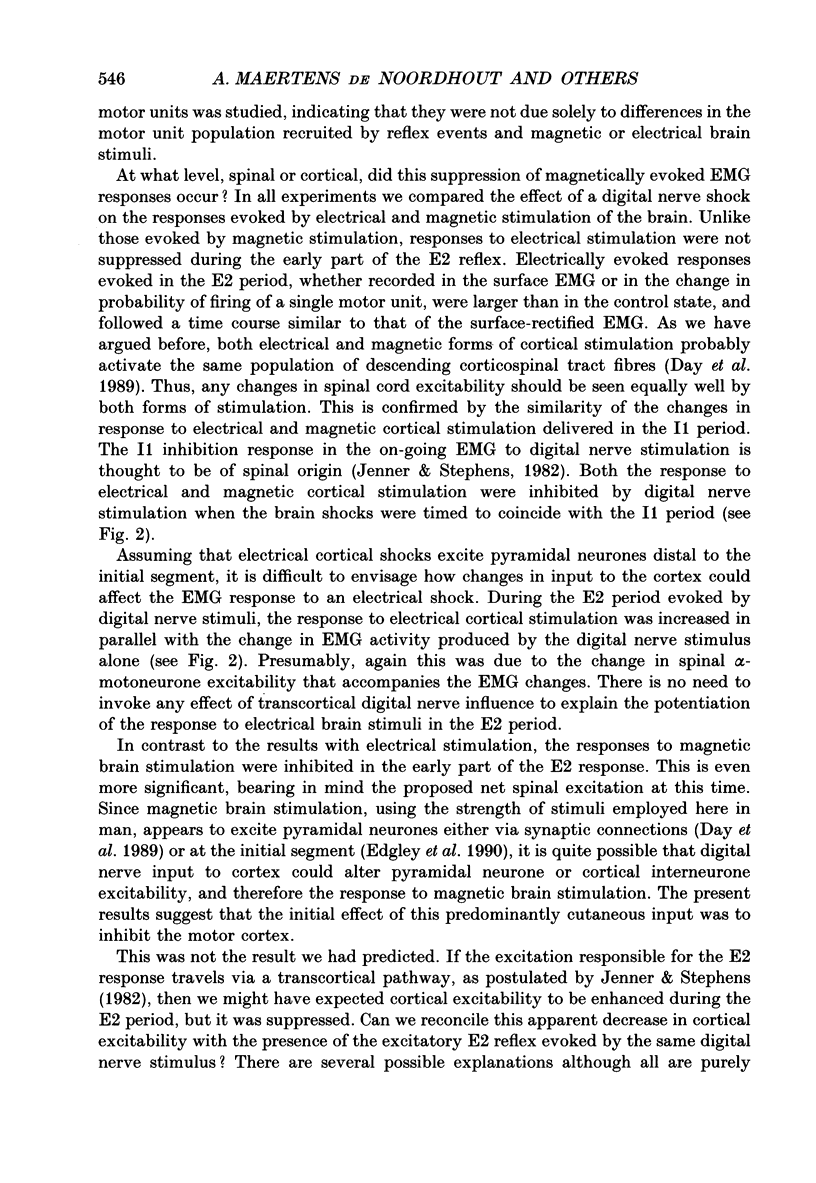
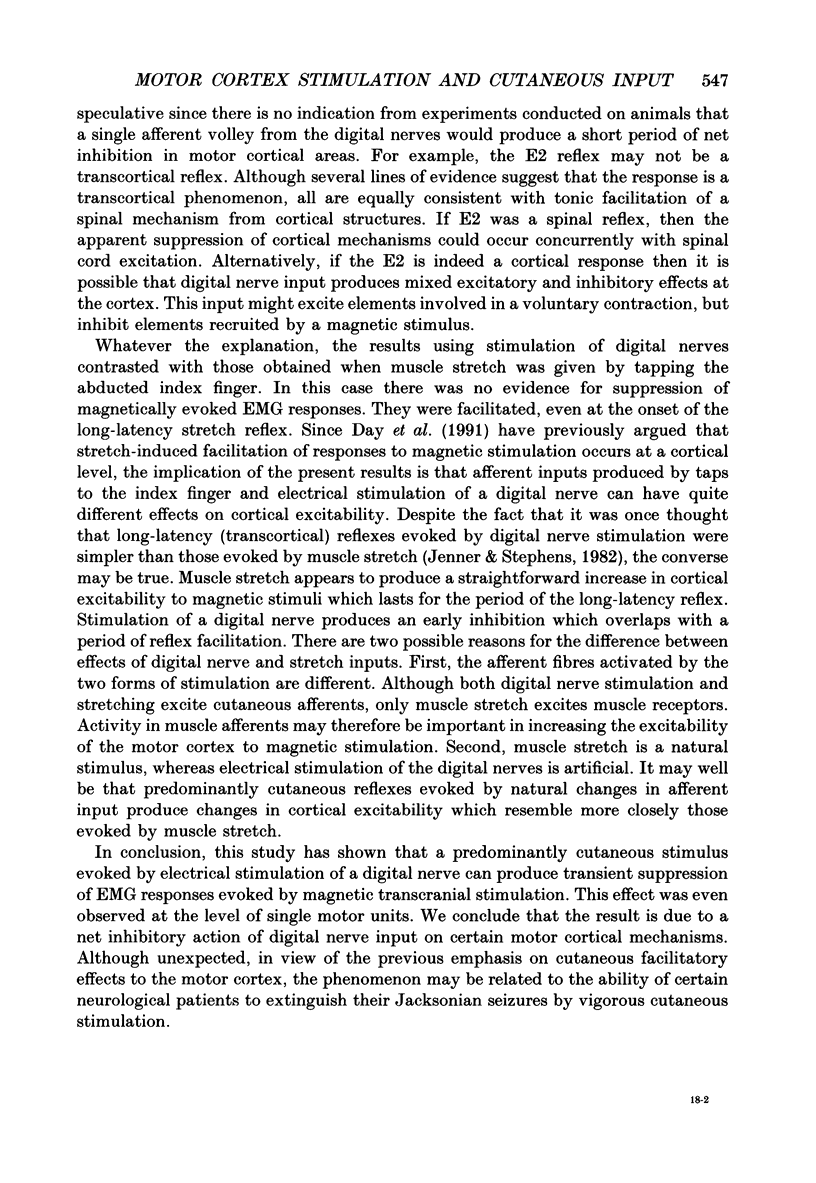
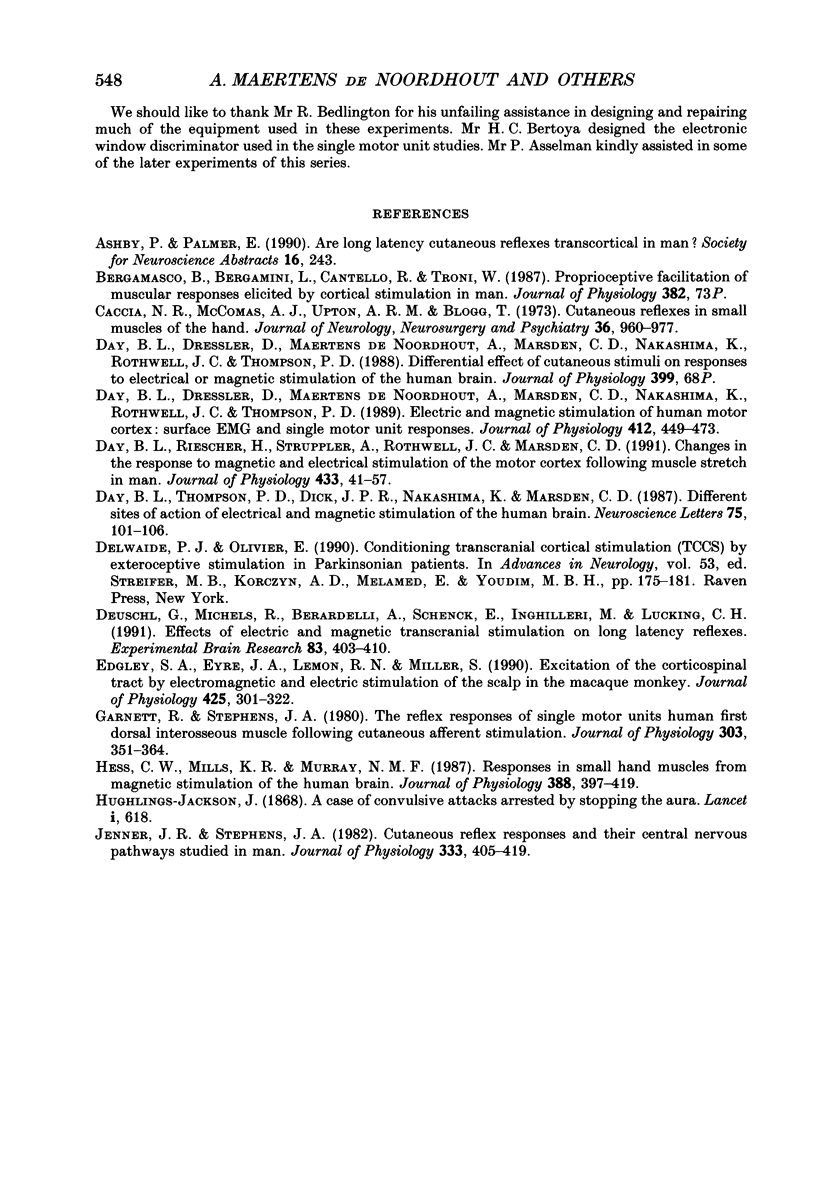
Selected References
These references are in PubMed. This may not be the complete list of references from this article.
- Caccia M. R., McComas A. J., Upton A. R., Blogg T. Cutaneous reflexes in small muscles of the hand. J Neurol Neurosurg Psychiatry. 1973 Dec;36(6):960–977. doi: 10.1136/jnnp.36.6.960. [DOI] [PMC free article] [PubMed] [Google Scholar]
- Day B. L., Dressler D., Maertens de Noordhout A., Marsden C. D., Nakashima K., Rothwell J. C., Thompson P. D. Electric and magnetic stimulation of human motor cortex: surface EMG and single motor unit responses. J Physiol. 1989 May;412:449–473. doi: 10.1113/jphysiol.1989.sp017626. [DOI] [PMC free article] [PubMed] [Google Scholar]
- Day B. L., Riescher H., Struppler A., Rothwell J. C., Marsden C. D. Changes in the response to magnetic and electrical stimulation of the motor cortex following muscle stretch in man. J Physiol. 1991 Feb;433:41–57. doi: 10.1113/jphysiol.1991.sp018413. [DOI] [PMC free article] [PubMed] [Google Scholar]
- Day B. L., Thompson P. D., Dick J. P., Nakashima K., Marsden C. D. Different sites of action of electrical and magnetic stimulation of the human brain. Neurosci Lett. 1987 Mar 20;75(1):101–106. doi: 10.1016/0304-3940(87)90083-8. [DOI] [PubMed] [Google Scholar]
- Delwaide P. J., Olivier E. Conditioning transcranial cortical stimulation (TCCS) by exteroceptive stimulation in parkinsonian patients. Adv Neurol. 1990;53:175–181. [PubMed] [Google Scholar]
- Deuschl G., Michels R., Berardelli A., Schenck E., Inghilleri M., Lücking C. H. Effects of electric and magnetic transcranial stimulation on long latency reflexes. Exp Brain Res. 1991;83(2):403–410. doi: 10.1007/BF00231165. [DOI] [PubMed] [Google Scholar]
- Edgley S. A., Eyre J. A., Lemon R. N., Miller S. Excitation of the corticospinal tract by electromagnetic and electrical stimulation of the scalp in the macaque monkey. J Physiol. 1990 Jun;425:301–320. doi: 10.1113/jphysiol.1990.sp018104. [DOI] [PMC free article] [PubMed] [Google Scholar]
- Garnett R., Stephens J. A. The reflex responses of single motor units in human first dorsal interosseous muscle following cutaneous afferent stimulation. J Physiol. 1980 Jun;303:351–364. doi: 10.1113/jphysiol.1980.sp013290. [DOI] [PMC free article] [PubMed] [Google Scholar]
- Hess C. W., Mills K. R., Murray N. M. Responses in small hand muscles from magnetic stimulation of the human brain. J Physiol. 1987 Jul;388:397–419. doi: 10.1113/jphysiol.1987.sp016621. [DOI] [PMC free article] [PubMed] [Google Scholar]
- Jenner J. R., Stephens J. A. Cutaneous reflex responses and their central nervous pathways studied in man. J Physiol. 1982 Dec;333:405–419. doi: 10.1113/jphysiol.1982.sp014461. [DOI] [PMC free article] [PubMed] [Google Scholar]


